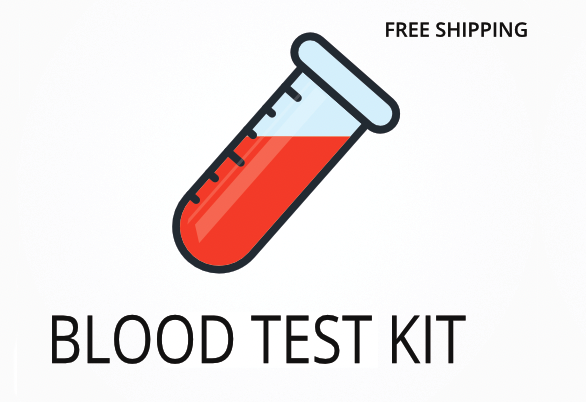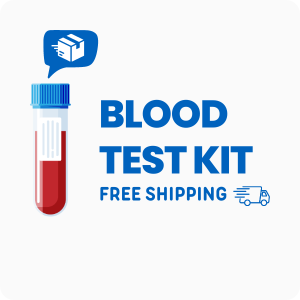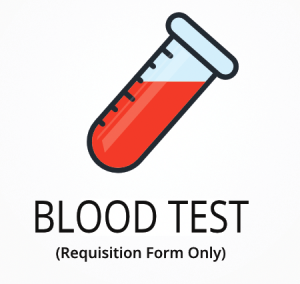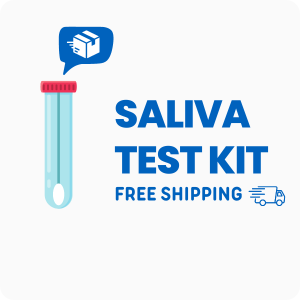Ordering the Essential Fatty Acid Test | New York
The Essential Fatty Acid Test from Genova Diagnostics helps you check the balance of key fats in your blood, including omega 3, omega 6, and other important fatty acids. These fats play a role in brain function, skin condition, and how your body handles inflammation. Interestingly, research shows that an imbalance in fatty acids can affect how well your body responds to stress and may even influence mood changes.
Ordering this test gives you a clear picture of your fatty acid levels, which can help you and your doctor make specific changes to your diet or supplements. When you order, you can expect these benefits:
- Pinpoints if you have low or high levels of omega 3, omega 6, and other fatty acids
- Helps guide changes in your eating habits for better skin, joint, and heart function
- Shows if your fatty acid ratios are linked to inflammation or skin issues like eczema or psoriasis
- Supports decisions about using fish oil or other supplements
- Tracks how well your body is using fats for energy and brain function
Who Should Consider Fatty Acid and Lipid Profile Testing
People who notice dry, flaky skin, frequent joint aches, or trouble focusing at school or work may benefit from this test. For example, someone who has tried different diets but still feels tired and has trouble remembering things might find out if their fatty acid levels are out of balance.
Ordering this test may also be helpful in these situations:
- Persistent skin problems like eczema or psoriasis that do not improve with creams
- Feeling tired even after a full night’s sleep
- Unexplained mood swings or feeling down for long periods
- Family history of heart or brain conditions
- People who follow a strict vegetarian or vegan diet, since plant-based diets can sometimes lead to low omega 3 levels
Checking your fatty acid levels can help you find out if your body is getting the right balance of fats for healthy skin, joints, and brain function. Waiting to order this test could mean missing the chance to make simple changes that may help with symptoms like dry skin, tiredness, or trouble concentrating.
How to Prepare for Fatty Acid Blood Analysis
Fasting is not required for this test, but some doctors may suggest avoiding fatty foods for 12 hours before your blood draw. Always follow any special instructions your doctor or healthcare provider gives you to make sure your sample is collected the right way.
Labs Included When Ordering Your Essential Fatty Acid Test
| Test Name | Reference Range | Significance | Low and High Levels of Essential Fatty Acid Test |
|---|---|---|---|
| Omega Fatty Acids | |||
| Omega 3 Fatty Acids (EPA, DHA, ALA) | EPA: 0.3-3.0 DHA: 1.0-4.0 ALA: 0.1-0.5 |
Omega 3s help with brain function, mood, and keeping inflammation in check. They are found in fish, flaxseed, and walnuts. |
High levels mean you may be taking too many supplements or eating a lot of fatty fish.
Low levels mean you may have trouble with memory, mood, or dry skin. |
| Omega 6 Fatty Acids (Linoleic Acid, Arachidonic Acid, GLA) | Linoleic: 10-25 Arachidonic: 3-10 GLA: 0.1-0.5 |
Omega 6s are needed for skin and hair growth and help the body respond to injury. They are found in vegetable oils and nuts. |
High levels mean you may have more inflammation or joint pain.
Low levels mean you may have dry skin or slow wound healing. |
| Omega 7 Fatty Acids | 0.1-0.5 | Omega 7s help keep skin and mucous membranes healthy. They are found in macadamia nuts and sea buckthorn oil. |
High levels mean you may be eating a lot of certain oils.
Low levels mean you may have dry eyes or mouth. |
| Omega 9 Fatty Acids (Oleic Acid) | 5-25 | Omega 9s help with heart and brain function. They are found in olive oil and avocados. |
High levels mean you may be eating a lot of olive oil or nuts.
Low levels mean you may have trouble with energy or memory. |
| Trans Fats (Elaidic Acid) | 0-0.2 | Trans fats are not healthy and can raise the risk of heart problems. They are found in processed foods and some margarines. |
High levels mean you may be eating too many processed foods.
Low levels mean you are avoiding unhealthy fats. |
| Saturated Fats (Palmitic, Stearic, Margaric, Behenic, Arachidic, Lignoceric, Tricosanoic, Pentadecanoic) | Palmitic: 20-30 Stearic: 10-20 Others: 0.1-2.0 |
Saturated fats are found in animal products and some plant oils. They can affect cholesterol and heart function. |
High levels mean you may be eating a lot of animal fats or coconut oil.
Low levels mean you may not be getting enough energy from fats. |
| Fatty Acid Ratios (Omega 6:3, Omega 3 Index) | Omega 6:3 ratio: 2:1 to 4:1 Omega 3 Index: 8-12 |
These ratios show if your fats are balanced. A good balance supports heart, brain, and skin function. |
High levels mean you may have more inflammation or risk for heart issues.
Low levels mean you may need more omega 3s in your diet. |
| Other Key Fatty Acids | |||
| Arachidonic Acid | 3-10 | Arachidonic acid is needed for brain and muscle function. It is found in meat and eggs. |
High levels mean you may have more inflammation or pain.
Low levels mean you may have weak muscles or trouble with memory. |
| Alpha Linolenic Acid (ALA) | 0.1-0.5 | ALA is a plant-based omega 3 that helps with heart and brain function. It is found in flaxseed and chia seeds. |
High levels mean you may be eating a lot of seeds or supplements.
Low levels mean you may have trouble with memory or dry skin. |
| Docosahexaenoic Acid (DHA) | 1.0-4.0 | DHA is an omega 3 that supports brain, eye, and nerve function. It is found in fish and algae oils. |
High levels mean you may be taking a lot of fish oil.
Low levels mean you may have trouble with memory or vision. |
| Eicosapentaenoic Acid (EPA) | 0.3-3.0 | EPA is an omega 3 that helps lower inflammation and supports heart function. It is found in fatty fish and fish oil. |
High levels mean you may be taking a lot of fish oil supplements.
Low levels mean you may have more joint pain or inflammation. |
| Linoleic Acid | 10-25 | Linoleic acid is an omega 6 that helps with skin and hair growth. It is found in vegetable oils and nuts. |
High levels mean you may be eating a lot of processed foods.
Low levels mean you may have dry skin or hair loss. |
| y-Linolenic Acid (GLA) | 0.1-0.5 | GLA is an omega 6 that helps with skin and joint comfort. It is found in evening primrose and borage oil. |
High levels mean you may be using a lot of certain plant oils.
Low levels mean you may have dry skin or joint stiffness. |
| Docosapentaenoic Acid (DPA) | 0.1-0.5 | DPA is an omega 3 that helps with heart and brain function. It is found in fish and some animal fats. |
High levels mean you may be eating a lot of fish or red meat.
Low levels mean you may have less support for heart and brain function. |
| Docosatetraenoic Acid | 0.1-0.5 | Docosatetraenoic acid is a long-chain fatty acid that helps with cell structure. It is found in animal fats and some fish. |
High levels mean you may be eating a lot of animal fats.
Low levels mean you may have weak cell membranes. |
| Eicosadienoic Acid | 0.1-0.5 | Eicosadienoic acid is an omega 6 that helps with cell growth. It is found in some plant oils. |
High levels mean you may be eating a lot of certain oils.
Low levels mean you may have slow cell growth. |
| Gondoic Acid | 0.1-0.5 | Gondoic acid is a monounsaturated fat that helps with nerve function. It is found in nuts and seeds. |
High levels mean you may be eating a lot of nuts or seeds.
Low levels mean you may have nerve discomfort. |
| Margaric Acid | 0.1-0.5 | Margaric acid is a saturated fat found in dairy and some plant oils. It helps with energy storage. |
High levels mean you may be eating a lot of dairy or coconut oil.
Low levels mean you may have less energy stored. |
| Oleic Acid | 5-25 | Oleic acid is an omega 9 that helps with heart and brain function. It is found in olive oil and avocados. |
High levels mean you may be eating a lot of olive oil or nuts.
Low levels mean you may have trouble with energy or memory. |
| Palmitic Acid | 20-30 | Palmitic acid is a saturated fat found in meat, dairy, and palm oil. It is used for energy and cell structure. |
High levels mean you may be eating a lot of animal fats or palm oil.
Low levels mean you may have less energy from fats. |
| Pentadecanoic Acid | 0.1-0.5 | Pentadecanoic acid is a saturated fat found in dairy. It can be a marker for dairy fat intake. |
High levels mean you may be eating a lot of dairy products.
Low levels mean you may not be getting much dairy fat. |
| Stearic Acid | 10-20 | Stearic acid is a saturated fat found in meat and chocolate. It is used for energy and cell structure. |
High levels mean you may be eating a lot of red meat or chocolate.
Low levels mean you may have less energy from fats. |
| Tricosanoic Acid | 0.1-0.5 | Tricosanoic acid is a long-chain saturated fat found in some animal fats. It helps with cell structure. |
High levels mean you may be eating a lot of animal fats.
Low levels mean you may have weak cell membranes. |
| Vaccenic Acid | 0.1-0.5 | Vaccenic acid is a trans fat found in dairy and some meats. It can affect cholesterol levels. |
High levels mean you may be eating a lot of dairy or red meat.
Low levels mean you may not be getting much dairy fat. |
| Other Fatty Acids | |||
| Lignoceric Acid | 0.1-0.5 | Lignoceric acid is a very long-chain fatty acid found in peanuts and some animal fats. It helps with nerve function. |
High levels mean you may be eating a lot of peanuts or animal fats.
Low levels mean you may have nerve discomfort. |
| Nervonic Acid | 0.1-0.5 | Nervonic acid is a fatty acid important for brain and nerve cell function. It is found in fish and some seeds. |
High levels mean you may be eating a lot of fish or seeds.
Low levels mean you may have trouble with memory or nerve function. |
Reference ranges may change slightly as labs update their methods and guidelines.
Essential Fatty Acid Test FAQ
Is there Essential Fatty Acid Test testing near me?
This test is available as a kit that you can use at a local draw site—check the draw location link at the top of the page. If you have skin issues or joint pain, being able to collect your sample nearby makes it easier to get answers without delay.
How do I interpret the test results?
While your doctor should review your results, you can also use our one-on-one test results review service with our clinical team for a detailed explanation.
What is the cost of the test?
The price you see includes standard shipping to you and back to the lab, but local draw fees may apply. Ordering this test is worth it if you want to address symptoms like dry skin or fatigue and get targeted help sooner.
How often should I retest?
It’s best to retest every 6 to 12 months, especially if you are making changes to your diet or supplements, so you can see if your fatty acid levels are improving.
How accurate is the test?
This test uses gas chromatography with flame ionization detection, which is highly specific for measuring fatty acids. The test has a specificity of 98% and a sensitivity of 97%. TrueHealthLabs.com partners with CLIA-certified and CAP-certified laboratories to uphold rigorous testing standards for dependable results.
Medical Review Board
Reviewed by Jeff Donohue M.D. from Body Logic and Brady Hurst DC, CCCN. Written by True Health Lab’s team of editorial health contributors.
Disclaimer: This information is for educational purposes only and not intended as medical advice. Consult your healthcare provider for personalized guidance.
Why Customers Trust True Health Labs - What People are saying
Also rated 4.6 out of 5 based on 3452 ShopperApproved reviews- See all TrueHealthLabs.com reviews.









